-
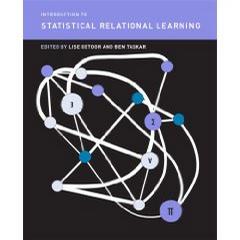
Introduction to Statistical Relational Learning (Adaptive Computation and Machine Learning)
Handling inherent uncertainty and exploiting compositional structure are fundamental to understanding and designing large-scale systems. Statistical relational learning builds on ideas from probability theory and statistics to address uncertainty while incorporating tools from logic, databases and programming languages to represent structure. In Introduction to Statistical Relational Learning, leading researchers in this emerging area of machine learning describe current formalisms, models, and algorithms that enable effective and robust reasoning about richly structured systems and data. The early chapters provide tutorials for material used in later chapters, offering introductions to representation, inference and learning in graphical models, and logic. The book then describes object-oriented approaches, including probabilistic relational models, relational Markov networks, and probabilistic entity-relationship models as well as logic-based formalisms including Bayesian logic programs, Markov logic, and stochastic logic programs. Later chapters discuss such topics as probabilistic models with unknown objects, relational dependency networks, reinforcement learning in relational domains, and information extraction. By presenting a variety of approaches, the book highlights commonalities and clarifies important differences among proposed approaches and, along the way, identifies important representational and algorithmic issues. Numerous applications are provided throughout.Lise Getoor is Assistant Professor in the Department of Computer Science at the University of Maryland. Ben Taskar is Assistant Professor in the Computer and Information Science Department at the University of Pennsylvania. -
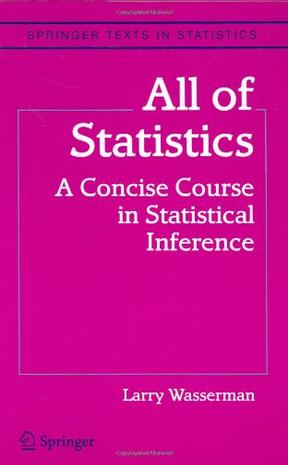
All of Statistics
WINNER OF THE 2005 DEGROOT PRIZE! This book is for people who want to learn probability and statistics quickly. It brings together many of the main ideas in modern statistics in one place. The book is suitable for students and researchers in statistics, computer science, data mining and machine learning. This book covers a much wider range of topics than a typical introductory text on mathematical statistics. It includes modern topics like nonparametric curve estimation, bootstrapping and classification, topics that are usually relegated to follow-up courses. The reader is assumed to know calculus and a little linear algebra. No previous knowledge of probability and statistics is required. The text can be used at the advanced undergraduate and graduate level. -

统计学习方法
《统计学习方法》是计算机及其应用领域的一门重要的学科。《统计学习方法》全面系统地介绍了统计学习的主要方法,特别是监督学习方法,包括感知机、k近邻法、朴素贝叶斯法、决策树、逻辑斯谛回归与最大熵模型、支持向量机、提升方法、EM算法、隐马尔可夫模型和条件随机场等。除第1章概论和最后一章总结外,每章介绍一种方法。叙述从具体问题或实例入手,由浅入深,阐明思路,给出必要的数学推导,便于读者掌握统计学习方法的实质,学会运用。为满足读者进一步学习的需要,书中还介绍了一些相关研究,给出了少量习题,列出了主要参考文献。 -
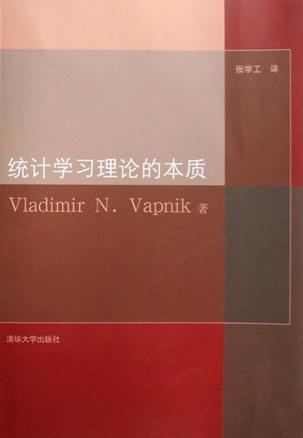
统计学习理论的本质
本书介绍了统计学习理论和支持向量机的关键思想、结论和方法,以及该领域的最新进展。统计学习理论是针对小样本情况研究统计学习规律的理论,是传统统计学的重要发展和补充。其核心思想是通过控制学习机器的容量实现对推广能力的控制。由Springer-Verlag出版社授权出版。 -
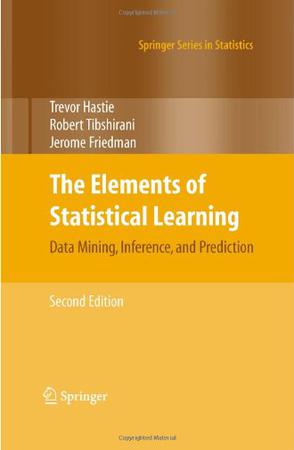
The Elements of Statistical Learning
During the past decade there has been an explosion in computation and information technology. With it have come vast amounts of data in a variety of fields such as medicine, biology, finance, and marketing. The challenge of understanding these data has led to the development of new tools in the field of statistics, and spawned new areas such as data mining, machine learning, and bioinformatics. Many of these tools have common underpinnings but are often expressed with different terminology. This book describes the important ideas in these areas in a common conceptual framework. While the approach is statistical, the emphasis is on concepts rather than mathematics. Many examples are given, with a liberal use of color graphics. It is a valuable resource for statisticians and anyone interested in data mining in science or industry. The book's coverage is broad, from supervised learning (prediction) to unsupervised learning. The many topics include neural networks, support vector machines, classification trees and boosting---the first comprehensive treatment of this topic in any book. This major new edition features many topics not covered in the original, including graphical models, random forests, ensemble methods, least angle regression & path algorithms for the lasso, non-negative matrix factorization, and spectral clustering. There is also a chapter on methods for "wide" data (p bigger than n), including multiple testing and false discovery rates. -
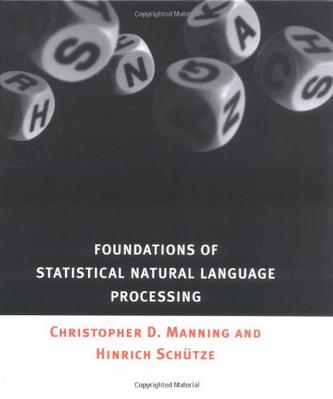
Foundations of Statistical Natural Language Processing
Statistical approaches to processing natural language text have become dominant in recent years. This foundational text is the first comprehensive introduction to statistical natural language processing (NLP) to appear. The book contains all the theory and algorithms needed for building NLP tools. It provides broad but rigorous coverage of mathematical and linguistic foundations, as well as detailed discussion of statistical methods, allowing students and researchers to construct their own implementations. The book covers collocation finding, word sense disambiguation, probabilistic parsing, information retrieval, and other applications.